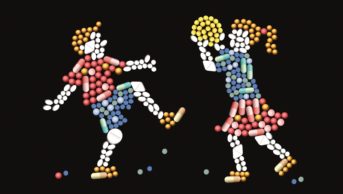
Shutterstock.com
The use of antipsychotic drugs by young people aged 13–24 years has risen in the United States between 2006 and 2010 but has fallen in those aged between 1–12 years of age, according to research published in JAMA Psychiatry[1]
on 1 July 2015.
The use was higher in males than females, especially during childhood and adolescence, revealed an analysis of prescription data from around 60% of pharmacies in the United States, led by Mark Olfson from the department of psychiatry at Columbia University in New York.
Attention-deficit/hyperactivity disorder was the most common diagnosis in 2009 for children aged 1–6 years who used antipsychotics (52.5%). The same diagnosis applied to 60.1% of 7–12 years of age and 34.9% of adolescents. Depression was the most common diagnosis for 19–24-year-old adults who received antipsychotics accounting for 34.5%.
The use of antipsychotics in children aged 1–6 years was 0.14% in 2006, falling to 0.11% in 2010. Among 7–12-year-old children the corresponding figures were 0.85% in 2006 down to 0.80% in 2010.
For children 13–18 years of age, 1.10% used antipsychotics in 2006 rising to 1.19% in 2010. Among 19–24-year-old adults, antipsychotic use was 0.69% in 2006 rising to 0.84% in 2010.
The researchers said their findings suggest that antipsychotic treatment of children and younger adolescents targets “age-limited” behavioural problems. The analysis was limited as it was based on data that captures medicines purchased rather than consumed, they note.
References
[1] Olfson M, King M, Schoenbaum M. Treatment of young people with antipsychotic medication in the US. JAMA Psychiatry. doi: 10.1001/jamapsychiatry. 2015.0500.


